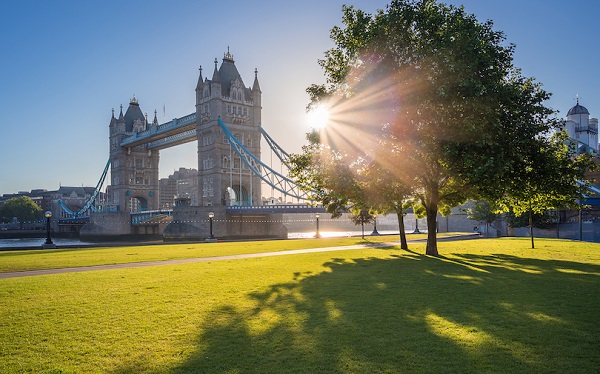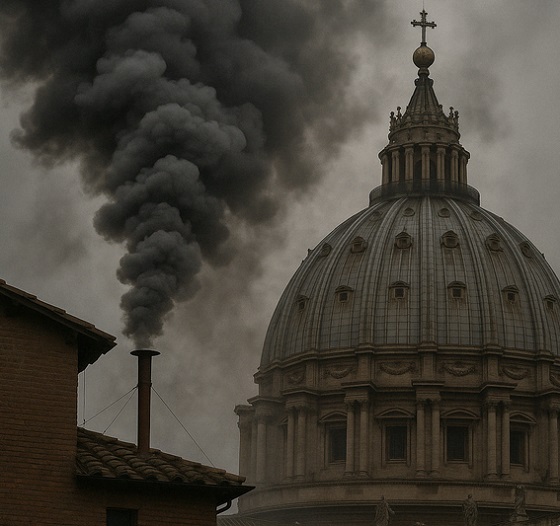Uncategorized
‘Horrific scene’: 13 dead including gunman at California bar

THOUSAND OAKS, Calif. — Using a smoke bomb and a handgun, a hooded former Marine dressed all in black opened fire during college night at a country music bar in Southern California, killing 12 people and sending hundreds fleeing in panic before apparently taking his own life, authorities said Thursday.
Authorities said the motive for the attack Wednesday night was under investigation.
The killer was identified as Ian David Long, a 28-year-old veteran who authorities said had an episode of erratic
Patrons at the bar screamed in fear, shouted “Get down!” and used barstools to smash second-floor windows and jump to safety as gunfire erupted at the Borderline Bar & Grill, a hangout popular with students from nearby California Lutheran University. The dead included 11 people inside the bar and a sheriff’s sergeant who was the first officer inside the door, Ventura County Sheriff Geoff Dean said.
“It’s a horrific scene in there,” Dean said in the parking lot. “There’s blood everywhere.”
The killer deployed a smoke device and used a .45-
It was the deadliest mass shooting in the U.S. since 17 students and teachers were killed at a Parkland, Florida, high school nine months ago. It also came less than two weeks after a gunman massacred 11 people at a synagogue in Pittsburgh. That, in turn, closely followed the series of pipe bombs mailed to critics of President Donald Trump.
Trump praised police for their “great bravery” in the California attack and said, “God bless all of the victims and families of the victims.” He ordered flags flown at half-staff in
Dean said his department had several previous contacts with Long, including a call to his home in April, when deputies found him angry and acting irrationally because of what authorities said might have been PTSD. The sheriff said a mental health crisis team was called at the time and concluded Long did not need to be taken into custody.
Dean said the other prior encounters were a traffic accident and an incident in which Long was the victim of a battery at a bar.
As for why he attacked the bar, “there’s no indication that he targeted the employees. We haven’t found any correlation,” the sheriff said. “Maybe there was a motive for this particular night, but we have no information leading to that at all.”
The gunman was tall and wearing all black with a hood and his face partly covered, witnesses told TV stations. He first shot a security guard standing outside, then went in and opened fire inside the nightclub, the sheriff said.
“I dropped to the floor,” Sarah Rose DeSon told ABC’s “Good Morning America.” ”A friend yelled, ‘Everybody down!’ We were hiding behind tables trying to keep ourselves covered.”
Sheriff’s Sgt. Ron Helus and a passing highway patrolman arrived at the Borderline around 11:20 p.m. in response to several 911 calls, heard gunfire and went inside, the sheriff said.
Helus was immediately hit with multiple gunshots, Dean said. The highway patrolman pulled Helus out, then waited as a SWAT team and scores more officers arrived. Helus died early Thursday at a hospital.
By the time they entered the bar again, the gunfire had stopped, according to the sheriff. They found 12 people dead inside, including the gunman, who was discovered in office and had apparently shot himself, the sheriff said.
“There’s no doubt that they saved lives by going in there and engaging with the suspect,” said Dean, who was set to retire on Friday. He praised the slain officer — a close friend — as a hero: “He went in there to save people and paid the ultimate price.”
Shootings of any kind are extremely rare in Thousand Oaks, a city of about 130,000 people about 40 miles (64
The Borderline, which includes a large dance hall along with several smaller areas for eating and drinking, was holding its regular “College Country Nights” Wednesday night when the attack took place.
The bar is also close to several other universities, including California State University Channel Islands in Camarillo, Pepperdine University in Malibu and Moorpark College in Moorpark.
Nick Steinwender, Cal Lutheran student body president, told KTLA-TV he immediately started receiving messages about the shooting, and he and his roommate went to the scene to offer rides back to campus or moral support.
“It’s going to be a very
When the gunman entered, people screamed and fled to all corners of the bar, and a few threw barstools through the windows and helped dozens to escape, witnesses said.
Video accessed by the AP showed law enforcement officers and vehicles speeding to the scene and people running from the bar. Rapid-fire gunshots could be heard as officers crouched behind a police vehicle, weapons drawn. Three people were seen carrying someone, and paramedics applied bandages to the man, who had blood on his back.
Cole Knapp, a freshman at Moorpark College, said he was inside the bar when the shooting began, but he thought at first that it was “just someone with an M-80, just kind of playing a prank.” Then he said he saw the gunman, wearing a small black head covering and black hoodie and holding a handgun.
“I tried to get as many people to cover as I could,” Knapp said. “There was an exit right next to me, so I went through that. That exit leads to a patio where people smoke. People out there didn’t really know what was going on. There’s a fence right there so I said, ‘Everyone get over the fence as quickly as you can,’ and I followed them over.”
He said a highway patrol officer who happened to be pulling someone over was nearby.
“I screamed to him, ‘There’s a shooter in there!’ He was kind of in disbelief, then saw that I was serious,” Knapp said. He said he had friends who hadn’t been accounted for.
Tayler Whitler, 19, said she was on the dance floor with her friends nearby when she saw the gunman shooting and heard screams of “Get down!”
“It was really, really, really shocking,” Whitler told KABC-TV as she stood with her father in the parking lot. “It looked like he knew what he was doing.”
The slain sheriff’s officer was a 29-year veteran of the force with a wife and son and planned to retire in the coming year, said the sheriff, who choked back tears as he talked about the sergeant who was also his longtime friend.
“Ron was a hardworking, dedicated sheriff’s sergeant who was totally committed,” Dean said, “and tonight, as I told his wife, he died a hero because he went in to save lives.”
___
AP journalists Andrew Dalton in Los Angeles, Michelle A. Monroe in Phoenix and Michael Balsamo in Washington contributed to this report.
Krysta Fauria, The Associated Press
Uncategorized
Poilievre on 2025 Election Interference – Carney sill hasn’t fired Liberal MP in Chinese election interference scandal

From Conservative Party Communications
“Yes. He must be disqualified. I find it incredible that Mark Carney would allow someone to run for his party that called for a Canadian citizen to be handed over to a foreign government on a bounty, a foreign government that would almost certainly execute that Canadian citizen.
“Think about that for a second. We have a Liberal MP saying that a Canadian citizen should be handed over to a foreign dictatorship to get a bounty so that that citizen could be murdered. And Mark Carney says he should stay on as a candidate. What does that say about whether Mark Carney would protect Canadians?
“Mark Carney is deeply conflicted. Just in November, he went to Beijing and secured a quarter-billion-dollar loan for his company from a state-owned Chinese bank. He’s deeply compromised, and he will never stand up for Canada against any foreign regime. It is another reason why Mr. Carney must show us all his assets, all the money he owes, all the money that his companies owe to foreign hostile regimes. And this story might not be entirely the story of the bounty, and a Liberal MP calling for a Canadian to be handed over for execution to a foreign government might not be something that the everyday Canadian can relate to because it’s so outrageous. But I ask you this, if Mark Carney would allow his Liberal MP to make a comment like this, when would he ever protect Canada or Canadians against foreign hostility?
“He has never put Canada first, and that’s why we cannot have a fourth Liberal term. After the Lost Liberal Decade, our country is a playground for foreign interference. Our economy is weaker than ever before. Our people more divided. We need a change to put Canada first with a new government that will stand up for the security and economy of our citizens and take back control of our destiny. Let’s bring it home.”
Uncategorized
Canada Needs A Real Plan To Compete Globally

From the Frontier Centre for Public Policy
Ottawa’s ideological policies have left Canada vulnerable. Strategic action is needed now
As Canada navigates an increasingly complex geopolitical landscape, the next federal government must move beyond reflexive anti—Americanism regardless of its political leanings. Instead, Canada should prioritize national interests while avoiding unnecessary conflict and subservience.
The notion that Canada can stand alone is as misguided as the idea that it is only an economic appendage of the United States. Both perspectives have influenced policy in Ottawa at different times, leading to mistakes.
Rather than engaging in futile name-calling or trade disputes, Canada must take strategic steps to reinforce its autonomy. This approach requires a pragmatic view rooted in Realpolitik—recognizing global realities, mitigating risks, governing for the whole country, and seizing opportunities while abandoning failed ideologies.
However, if Washington continues to pursue protectionist measures, Canada must find effective ways to counteract the weakened position Ottawa has placed the country in over the past decade.
One key strategy is diversifying trade relationships, notably by expanding economic ties with emerging markets such as India and Southeast Asia. This will require repairing Canada’s strained relationship with India and regaining political respect in China.
Unlike past Liberal trade missions, which often prioritized ideological talking points over substance, Canada must negotiate deals that protect domestic industries rather than turning summits into platforms for moral posturing.
A more effective approach would be strengthening partnerships with countries that value Canadian resources instead of vilifying them under misguided environmental policies. Expand LNG exports to Europe and Asia and leverage Canada’s critical minerals sector to establish reciprocal supply chains with non-Western economies, reducing economic reliance on the U.S.
Decades of complacency have left Canada vulnerable to American influence over its resource sector. Foreign-funded environmental groups have weakened domestic energy production, handing U.S. industries a strategic advantage. Ottawa must counter this by ensuring Canadian energy is developed at home rather than allowing suppressed domestic production to benefit foreign competitors.
Likewise, a robust industrial policy—prioritizing mining, manufacturing, and agricultural resilience—could reduce dependence on U.S. and Chinese imports. This does not mean adopting European-style subsidies but rather eliminating excessive regulations that make Canadian businesses uncompetitive, including costly domestic carbon tariffs.
Another key vulnerability is Canada’s growing military dependence on the U.S. through NORAD and NATO. While alliances are essential, decades of underfunding and neglect have turned the Canadian Armed Forces into little more than a symbolic force. Canada must learn self-reliance and commit to serious investment in defence.
Increasing defence spending—not to meet NATO targets but to build deterrence—is essential. Ottawa must reform its outdated procurement processes and develop a domestic defence manufacturing base, reducing reliance on foreign arms deals.
Canada’s vast Arctic is also at risk. Without continued investment in northern sovereignty, Ottawa may find itself locked out of its own backyard by more assertive global powers.
For too long, Canada has relied on an economic model that prioritizes federal redistribution over wealth creation and productivity. A competitive tax regime—one that attracts investment instead of punishing success—is essential.
A capital gains tax hike might satisfy activists in Toronto, but it does little to attract investments and encourage economic growth. Likewise, Ottawa must abandon ideological green policies that threaten agri-food production, whether by overregulating farmers or ranchers. At the same time, it must address inefficiencies in supply management once and for all. Canada must be able to feed a growing world without unnecessary bureaucratic obstacles.
Ottawa must also create an environment where businesses can innovate and grow without excessive regulatory burdens. This includes eliminating interprovincial trade barriers that stifle commerce.
Similarly, Canada’s tech sector, long hindered by predatory regulations, should be freed from excessive government interference. Instead of suffocating innovation with compliance mandates, Ottawa should focus on deregulation while implementing stronger security measures for foreign tech firms operating in Canada.
Perhaps Ottawa’s greatest mistake is its knee-jerk reactions to American policies, made without a coherent long-term strategy. Performative trade disputes with Washington and symbolic grandstanding in multilateral organizations do little to advance Canada’s interests.
Instead of reacting emotionally, Canada must take proactive steps to secure its economic, resource, and defence future. That is the role of a responsible government.
History’s best strategists understood that one should never fight an opponent’s war but instead dictate the terms of engagement. Canada’s future does not depend on reacting to Washington’s policies—these are calculated strategies, not whims. Instead, Canada’s success will be determined by its ability to act in the interests of citizens in all regions of the country, and seeing the world as it is rather than how ideological narratives wish it to be.
Marco Navarro-Génie is the vice president of research at the Frontier Centre for Public Policy. With Barry Cooper, he is co-author of Canada’s COVID: The Story of a Pandemic Moral Panic (2023).
-

 Business2 days ago
Business2 days agoChinese firm unveils palm-based biometric ID payments, sparking fresh privacy concerns
-

 2025 Federal Election1 day ago
2025 Federal Election1 day agoStudy links B.C.’s drug policies to more overdoses, but researchers urge caution
-

 2025 Federal Election2 days ago
2025 Federal Election2 days agoFormer WEF insider accuses Mark Carney of using fear tactics to usher globalism into Canada
-

 Environment2 days ago
Environment2 days agoExperiments to dim sunlight will soon be approved by UK government: report
-

 2025 Federal Election2 days ago
2025 Federal Election2 days agoConservatives promise to ban firing of Canadian federal workers based on COVID jab status
-

 International2 days ago
International2 days agoPope Francis Got Canadian History Wrong
-

 2025 Federal Election1 day ago
2025 Federal Election1 day agoCarney’s Hidden Climate Finance Agenda
-

 2025 Federal Election1 day ago
2025 Federal Election1 day agoWhen it comes to pipelines, Carney’s words flow both ways






